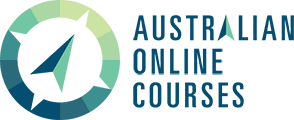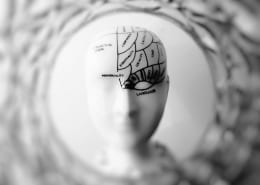The study of cardiovascular fitness and health involves gaining insights into the physiology of the blood, heart, lungs, airways and vasculature. This advanced biology course is ideal for those wanting to understand cardiorespiratory fitness, sports performance and the appropriate exercises for maintaining health, including health professionals and sports coaches.
The Certificate of Human Biology – Cardiovascular Fitness and Health is an online professional development program that will give you insights into the vital processes that occur in healthy cardiovascular and respiratory systems, and the physiology, anatomy, biochemistry and basic physics that drive these processes.
In this human biology course, you will explore the science of blood and the factors that affect blood pressure, pulmonary ventilation, including the respiratory system, and how to measure lung capacity and function.
You will also learn about gas exchange and blood flow in the human body, cardiorespiratory control and the nervous system, and the various types of cardiorespiratory diseases.
On completion of this course, you will understand the impact of medical conditions and other factors on cardiorespiratory performance and how to regulate this vital multi-organ system.
Course Structure
Cardiorespiratory Performance - Human Biology
Unit 1 – The science of blood
- The functions of blood
- Components of blood
- Blood typing
- Blood cells
- Haematopoiesis; erythropoiesis, leukopoiesis, lymphopoiesis
- Blood cell function; erythrocytes, neutrophils, eosinophils, basophils, thrombocytes
- Etc
- The immune response
- Haemostasis
- Clotting mechanism
- Haemodynamic
- Circulatory networks
- Blood testing
- Full blood count
- Cross matching
- Blood cultures
- Arterial blood gas
- Biochemical and metabolic tests
- INR
- Blood disorders; red & white blood disorders, blood clotting, poisoning
- Lymphatic system
Unit 2 – Blood pressure
- Factors affecting blood pressure; cardiac output, peripheral resistance, blood volume
- How blood pressure is measured
- The cardiac cycle
- Heart muscle cell contraction
- Electrical control of the heart muscle cells; sinoatrial node (SA Node), atrioventricular node (AV Node), bundle of his (atrioventricular bundle), purkinje fibres
- Blood pressure problems
- Systolic hypertension, diastolic hypertension and hypertension
- Distribution of blood flow
- Regulating heart rate and blood pressure
- Sensors
- Problems with heart rate; variations, and other conditions including myocardial infarction and cardiac tamponade
- Electrocardiograms and their interpretation
Unit 3 – Pulmonary ventilation
- The respiratory system
- Respiratory epithelium
- The lungs
- Lung anatomy
- Alveoli
- Airway anatomy
- Nasal and oral cavities
- Pharynx
- Epiglottis
- Larynx
- Trachea
- Bronchi and bronchioles
- Physiology of breathing; equilibrium, pressure, inspiration, expiration
- Physiological measures of lung capacity and function; total lung capacity, tidal volume, vital capacity, forced vital capacity, irv, erv, functional residual capacity, mv, vo2 max, etc
- Effect of exercise on pulmonary ventilation
Unit 4 – Gas exchange and transport
- Gas exchange in the human body
- External respiration
- Oxygen transport
- Internal respiration
- Haemoglobin
- Carbon dioxide transport
- Biochemistry of gas exchange; Boyle’s law, Charles’ law, Dalton’s law, Henry’s law, etc
- Factors affecting gas exchange; partial pressure gradients, gas solubility, membrane thickness, etc
- Compliance
- Respiratory control
Unit 5 – Blood flow and gas transport
- Blood flow; volume, target
- Gas transport
- Arterial-alveolar gradient
- Oxygen transport
- Factors effecting oxygen release by haemoglobin
- The bohr-haldane effect
- Cellular respiration
- Energy production; anaerobic and aerobic
- Blood flow during exercise and rest
Unit 6 – Cardio respiratory control
- Cardio respiratory control and the nervous system
- Input sensors
- The CV centre
- High brain centres
- Baroreceptors and chemoreceptors
- The respiratory centre
- Starling’s law
- Capillaries
- The control of heart and lungs during exercise
Unit 7 – Cardio respiratory disease
- Cardiac diseases and injuries
- Chronic heart failure
- Congestive heart failure
- Myocardial infarction and ischemia
- Cardiovascular diseases
- Coronary heart disease
- Atherosclerosis
- Aneurysm
- Vasculitis
- Venous thrombosis
- Varicose veins
- Causes of cardiovascular disease; lifestyle, diet, obesity, genetics, smoking, hypertension, etc
- Respiratory disease
- Asthma
- Chronic obstructive pulmonary disease
- Emphysema
- Cystic fibrosis (CF)
- Effects of cardio pulmonary disease
Study Hours
Estimated duration 50 hours
Course Delivery and Start
Start anytime, self-paced and 100% online
Assessment
Assessment will be comprised of written exercises, including short-answer questions, reflective tasks, short reports and/or projects. There are no examinations or due dates for assessment. As a result, you can complete training in your own time and at your own pace with the assistance of unlimited tutor support.
Testimonials
Graduation
A Certificate of Attainment and Statement of Results will be issued upon successful completion of this course.
How to Enrol
Enrol Online: Click Enrol Now (Credit Card) or Enrol Now (Internet Banking/BPAY)
Enrol via Live Chat (Business Hours)
Enrol via Telephone 1300 76 2221 (Business Hours)
Enrol via Purchase Order/Tax Invoice
Enrolling Multiple Staff?
To enrol multiple staff, please complete the Employer Enrolment Form. We’ll be in touch within 60 minutes during business hours!
Payment Options
Visa, Mastercard, BPAY and Direct Deposit.
Course FAQs
Why Choose Australian Online Courses?
- Professional development that is widely recognised and respected;
- Improve your employment opportunities;
- Study online, anywhere via our elearning system;
- High-quality professional development programs written by industry experts;
- All course materials provided online – no textbooks to buy;
- Unlimited tutor support via email;
- We offer twelve (12) months’ access, with extensions available upon application (fees apply);
- Course may be tax deductible; see your tax advisor.
Are there any entry requirements or pre-requisites?
To study online with Australian Online Courses you will need a computer (desktop PC/laptop) running a current/updated operating system with reliable high-speed internet access. You will need to use the Google Chrome browser to access your course.
Are there any computer requirements?
To study online with Australian Online Courses you will need a computer (desktop PC/laptop) running a current/updated operating system with reliable high-speed internet access. You will need to use the Google Chrome browser to access your course.
When can I start this course?
You can start within 60 minutes during business hours when you enrol and pay in full with a credit card!
Credit card: Within 60 mins during business hours.
BPAY: Within 1-2 working days.
Internet Banking: Within 1-2 working days.
Cheque/Money Order: Upon receipt of mailed cheque.
How is this course delivered?
This course is delivered online via our easy-to-navigate Learning Management System (LMS), where you will discover interactive online learning/written content, resources and assessment.
Do I need to attend classes or undertake any work placements?
No. All courses are delivered online via our LMS and there are no work placement requirements in this course.
What support can I expect from Australian Online Courses?
Unlimited tutor support is available throughout your studies via email only during business hours Monday to Friday. Our Administrative team are available Monday to Friday via email, live chat and telephone.
I am an international student. Can I enrol into this course?
Yes! We accept enrolments from individuals both within Australia and internationally; location is no barrier to entry into our programs.
Career Pathways
Future growth
Strong
Unemployment
Low
Professional development for those wishing to understand cardio respiratory health and biology. As well as gain a better understanding of sports performance. Perfect for sports coaches and health professionals.










